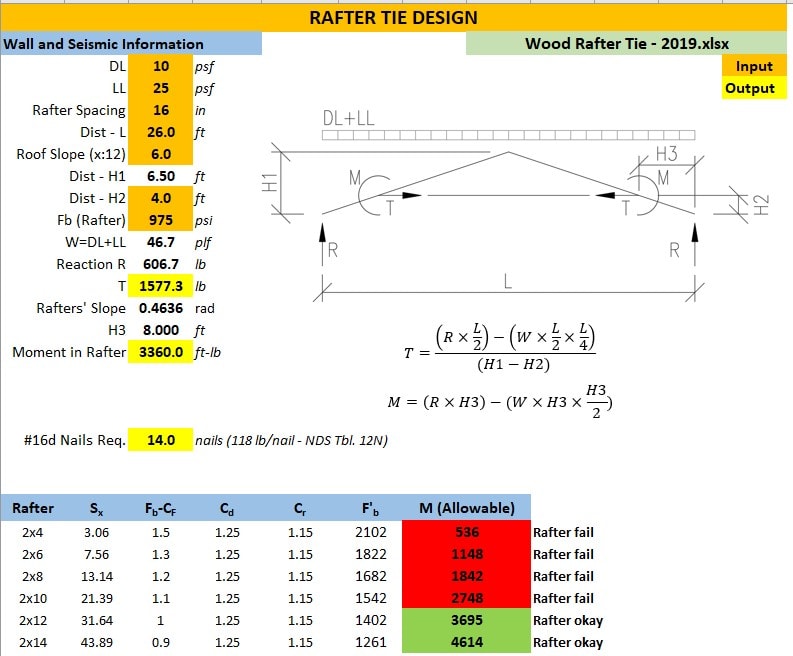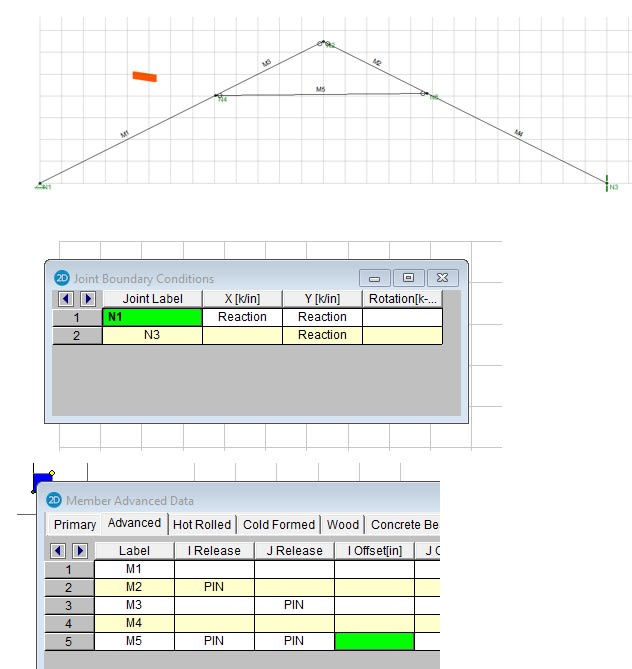mfstructural
Structural
I haven't done a calculation for roof rafters/collar ties in a while and I'm a little rusty. I'm trying to run some calcs on an existing roof that has 2x6 rafters @ 16". The rafters are about 14'-6" in length, roof pitch is 6:12. 2x6 collar tie is located about 30" below the bottom of the ridge board. Previously, these 2x6 members were at the top plate level acting as ceiling joists/rafter ties, but it's been opened up to create an open space. How would I approach this? Does the collar tie reduce the span of the rafter? or do you assume the rafter is spanning the full 14-6"? A 2x6 rafter spanning that far will not work for 25 psf snow and 10 psf DL. I'm not sure how to approach it calculation wise?
Thanks
Thanks


